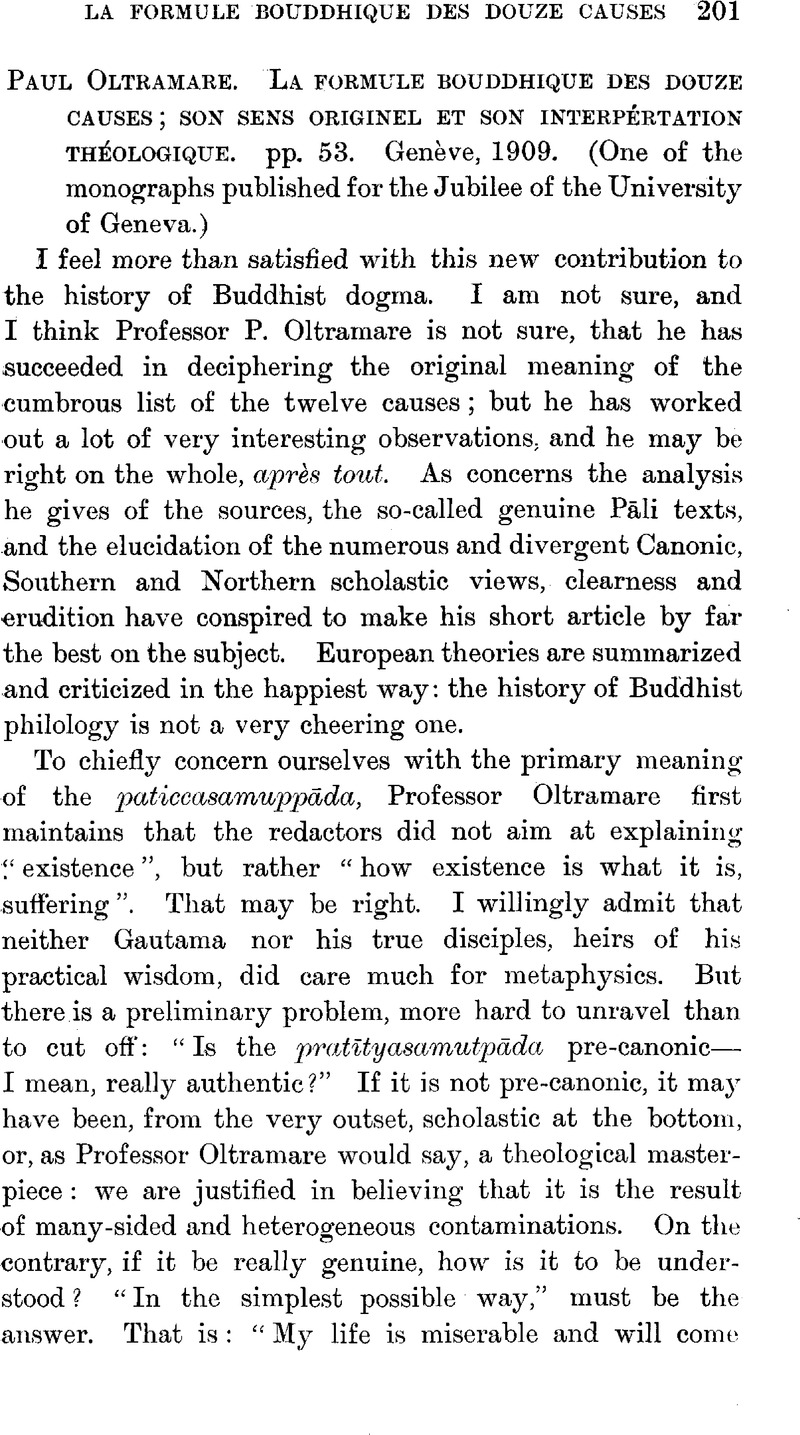No CrossRef data available.
Article contents
Paul Oltramare. La formule bouddhique des douze causes; son sens Originel et son Interpértation théologique. pp. 53. Genève, 1909. (One of the monographs published for the Jubilee of the University of Geneva.)
Published online by Cambridge University Press: 15 March 2011
Abstract

- Type
- Notices of Books
- Information
- Copyright
- Copyright © The Royal Asiatic Society 1910
References
page 204 note 1 . . . na bhikṣavaḥ karmāṇi . . . bāhye pṛthivīdhātau vipacyante, . . . api tūpātteṣu skandhadhātvāyataneṣu.
page 205 note 1 I am not sure that this definition would hold in every case.
page 206 note 1 I venture to differ from Professor Oltramare on some points of little importance, p. 10: As well said, kāma is sexual desire; there is “desire” in the rūpadhātu, as far as I know. p. 27, note: I think that the Śālistambasūtra has the canonic phraseology, p. 28: But there is a jīvitendriya, at least in the latter scholastic, p. 41: I do not see how avidyā acquired a new value (and a cosmic one) from the fact that it came to be looked upon as the ignorance of the nairātmya. p. 41, note: Lefmann follows Rājendralāl, but the Tibetan translation has pratyayebhiç ca ( = co), and confirms Professor Oltramare's scepticism. p. 46: Is not Buddhaghoṣa to be understood according to Śikṣāsamuccaya, p. 227, 11?—As concerns Pāli references, it seems that the true light came recently from Cambridge (Mass.): to give up the notation by sūtras, vaggas, samyuttas, sub-vaggas, etc., would be helpful to the reader and very agreeable to our excellent friend Professor Lanman.




